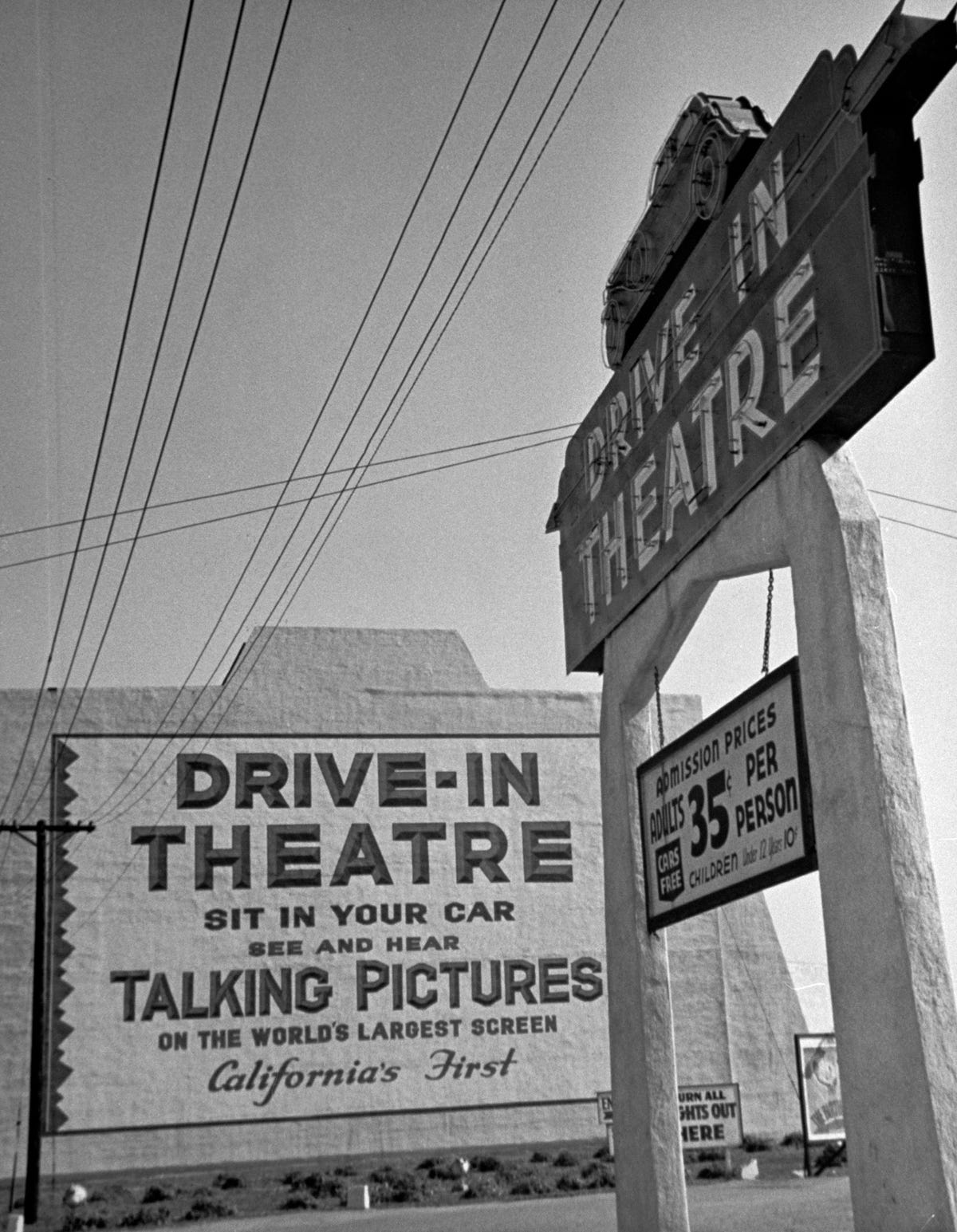
25 cents, please
Accordion speakers
In 1938, Popular Mechanics wrote that the "problem of sound control had been resolved by the installation of individual loudspeakers for each car in the parking lot.
"The low-volume, bucket-shaped magnetic speakers, numbering 460, are attached to the railing directly in front of the parking rows. They aim the sound at the spectators through the radiators of the cars and can be turned off in any unoccupied sections of the 10-acre enclosure. Formerly three huge dynamic speakers, 22 feet long and 7 feet across the opening were used, but their sound production could not be controlled and they were sometimes heard blocks away. At capacity more than 2,000 motorists can enjoy the movies at this theater. The spectators' cars are placed on a slight incline, so that the backseat patrons may view the picture with ease. The screen is 40 feet by 50 feet, set in a structure 72 feet high and 132 feed wide."
Sound delays
Drive-in distractions
Service with a smile
Here, it's still service with a smile, as a carhop with a flashlight hanging from her neck carries a tray of food and drinks to car occupants at a drive-in movie.
Disappearing drive-ins
It's hard to gauge the actual numbers, though it's believed that between 400 and 500 drive-ins remain. (The Drive-in Theater has compiled a state-by-state list.)
In this image, a lone popcorn bucket lays on the ground after a night at the movies at the Fiesta drive-in theater in Carlsbad, N.M.

